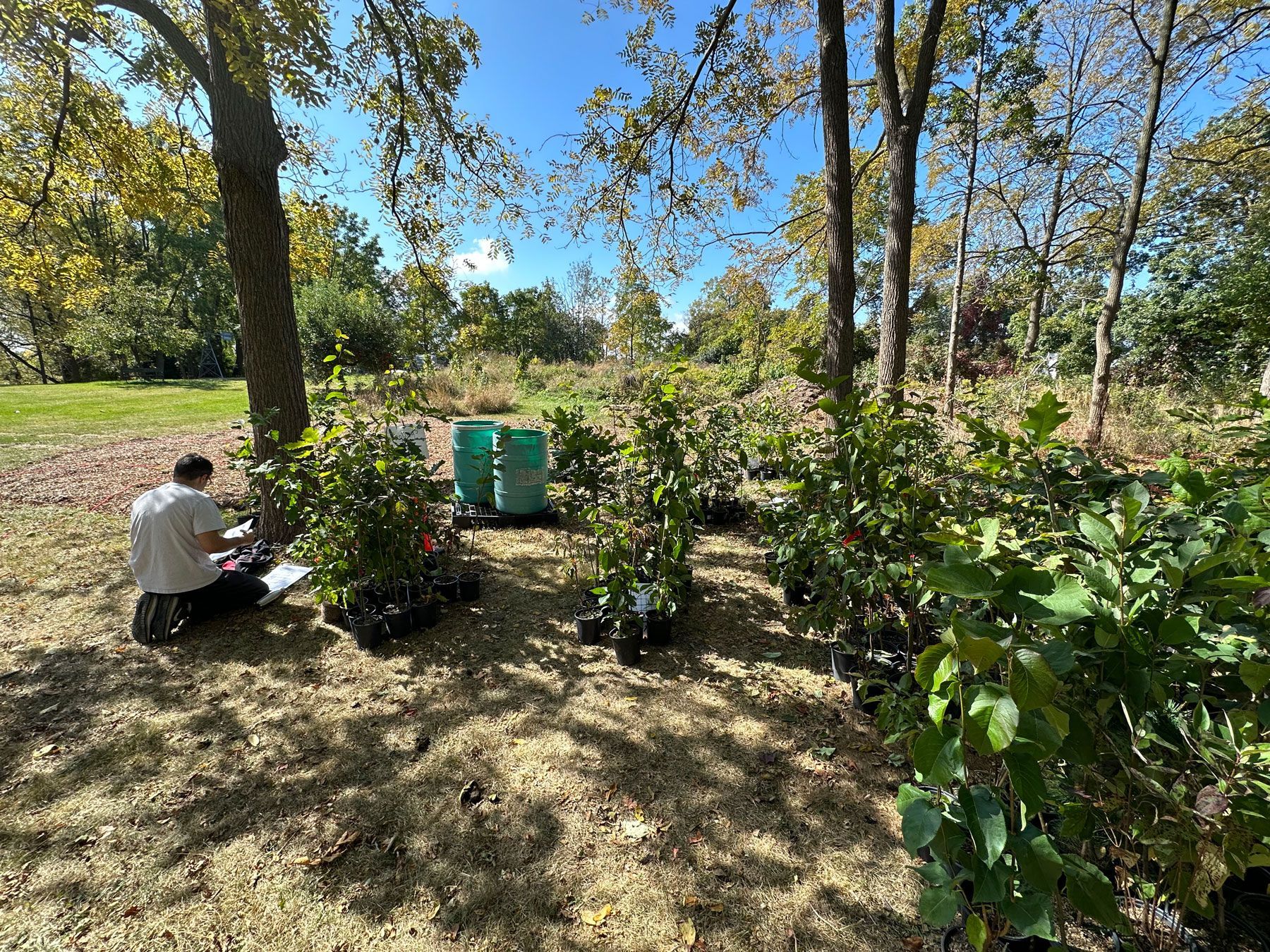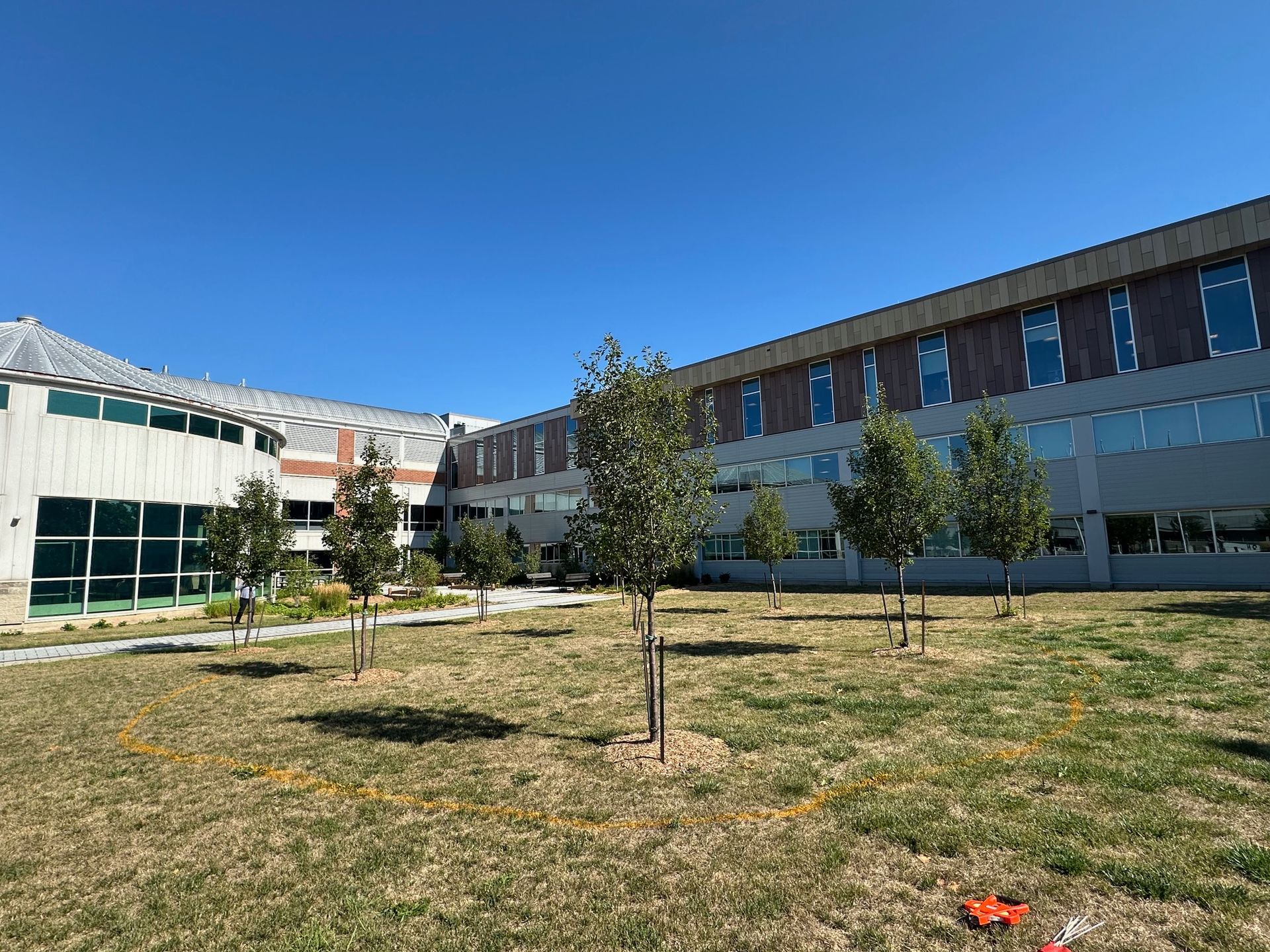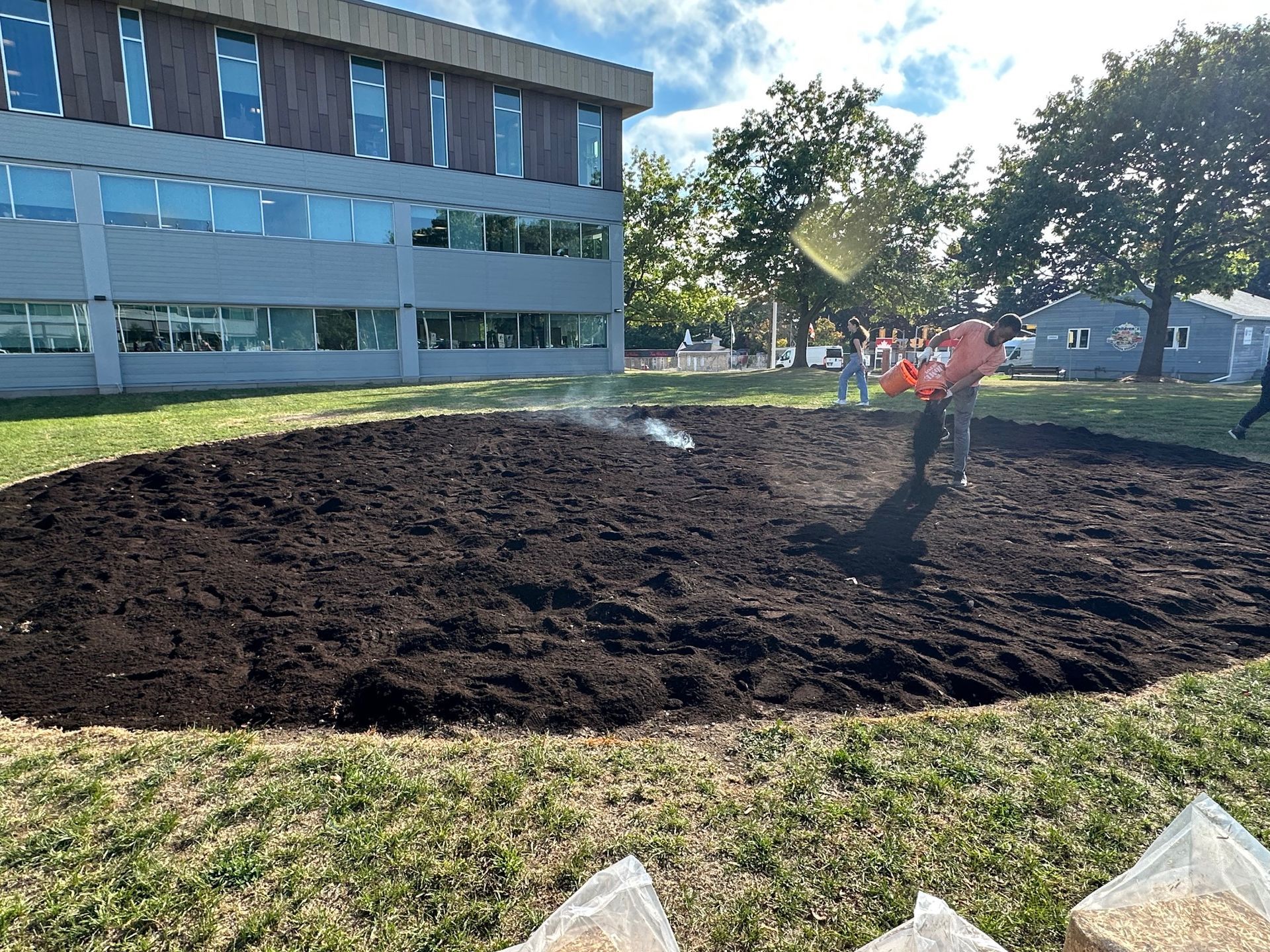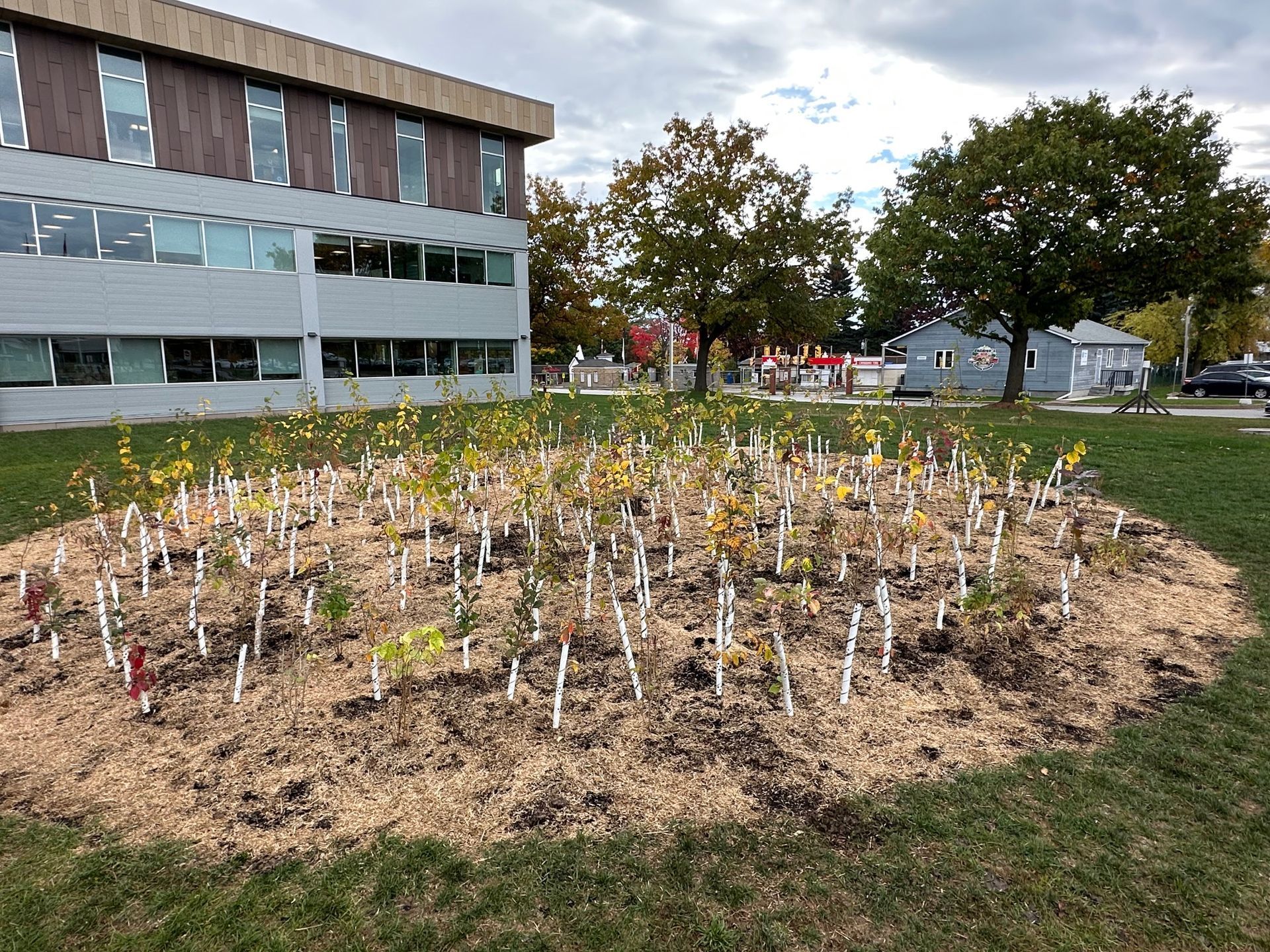What is a Mini Forest?
A mini forest — also known as a micro forest or tiny forest — is a community of native trees and shrubs planted tightly together in an urban or suburban site based on the Miyawaki method. The method emphasizes the use of dense plantings, diverse locally-native species collections, soil preparation, and multilayered design to mimic the complexity of a native forest. This dense planting technique results in taller plants in a shorter time period.
How do Mini Forests work?
Originally developed by Japanese botanist Akira Miyawaki in the 1970s, the method has received popularity across the globe and it takes inspiration directly from processes and diversity in nature.
The densely planted forests are powerful, containing hundreds of plants, each striving to get its share of sun and rain. Ideally, these forests achieve mature heights in about 20 years, rather than 100 or more, because they grow in a community and grow up rather than out.
Miyawaki forests are believed to grow 10 x faster, 30 x denser and contain significantly more biodiversity. Since they are quick to establish and can be created on tiny sites, they are critical solutions for cities to rapidly build climate resilience.
What plant species do we choose for our mini forests?
The combination of the plant species chosen for our mini forests is of great significance as various species have evolved together and thrive in the same or similar environments. Trees must be native to the area so they can support wildlife and be resilient to local climate conditions.
Why are mini forests important?
Mini forests provide a variety of ecosystem services that offer both environmental and social benefits. From reducing air pollution to increasing biodiversity, and providing necessary habitat for wildlife, these small plots can have a big impact on their local environments. They provide much-needed green spaces for people to enjoy, offering mental health benefits and improving air quality. Mini forests also help reduce runoff, prevent flooding and mitigate the urban heat island effect.
Mini Forest at Joshua Creek Heritage Art Centre
The Mini Forest created at Joshua Creek Heritage Art Centre was the first mini forest in Oakville and one of the first mini forest projects created in Greater Toronto Area. It is a project led and supported by Green Communities Canada and their Living Cities Fund which helps community-based organizations to engage citizens in the planning, design, and implementation of local action projects such as mini forests.
Mini Forest at Halton Regional Centre
In partnership with Halton Region and with the support of employee volunteers, 357 native trees and shrubs were planted at the Halton Regional Centre.
What was once open turf is now a vibrant Miyawaki mini forest. This dense, fast-growing ecosystem supports local biodiversity while improving soil health, capturing carbon, and cooling the surrounding area. Beyond its environmental benefits, this project strengthens community connections and raises awareness about climate action and habitat restoration.
Caring for the land is also an act of reconciliation. This work honours Indigenous knowledge, respects the history of the land, and contributes to healing relationships through meaningful, hands-on stewardship.
Thank you to Halton Region Climate Change & Sustainability, Indigenous Relations, Public Works, Corporate Services, and all the volunteers who made this possible. Together, we’re showing how small green spaces can grow into powerful solutions for climate resilience and community well-being.
Contact programs@oakvillegreen.org for more information.

















